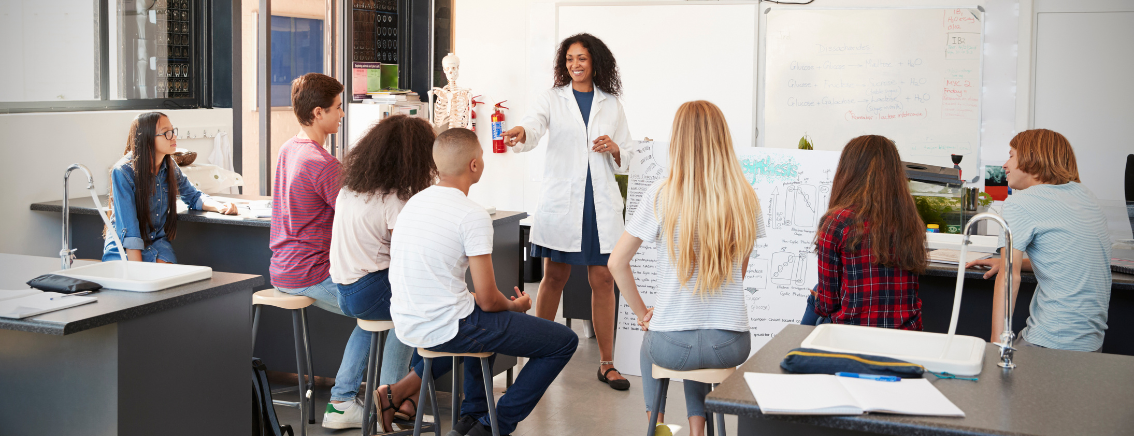
5 Ways to Incorporate Climate Education in Different Content Areas
Educators play a pivotal role in nurturing students’ interest in environmental stewardship, especially regarding climate change. With the world facing critical environmental challenges, it’s essential to weave climate education into various subjects to inspire young minds to be change-makers. This article highlights the key findings from the webinar: Climate Education: Ignite Student Learning, Engagement, and Action presented by Dr. Monica Burns. The findings present a guide for educators on how to effectively incorporate climate education and empower students to address the climate crisis.
Environmental Stewardship—Ignite Student Interest
Environmental stewardship begins with educators who spark enthusiasm and curiosity in students about the environment and climate change. Teachers have the unique power to kindle the fire of environmental stewardship, encouraging students to engage with these critical issues.
1. Take a Solutions Point of View
Incorporating a solutions-oriented perspective into climate education is a transformative approach. By embracing this proactive stance and cultivating a positive mindset, students can unlock their potential to make a meaningful impact. Whether independently, in small groups, or with a partner, they can identify actionable steps within their control. This empowers them to consider not only immediate changes but also long-term strategies, encouraging them to ponder what actions they can take this week, month, or year to contribute to positive change in their local community and beyond. This approach instills a sense of responsibility and purpose, motivating students to become active participants in addressing climate challenges.
Project Ideas: Planting trees, building community gardens, or starting classroom or campus compost stations to reduce food waste.
2. Look at the Science of—or Behind—the Problem
Engaging students in a comprehensive exploration of the science behind climate change is pivotal for fostering understanding and driving action. By delving into the intricacies of the problem using credible and high-quality resources, students can grasp the causes, effects, and potential solutions to climate change. This analytical approach prompts them to critically determine the root causes, asking why this global issue is transpiring and necessitating action. Additionally, encouraging research on innovative societal responses to climate change empowers students to evaluate diverse strategies being implemented worldwide. By examining actions taken in various parts of the world and within their own communities, students can develop a broader perspective and envision how their contributions can make a meaningful difference.
Project Ideas: Have students create infographics and/or videos that summarize their research and share innovative solutions.
3. Share Innovative Changemakers
Introducing students to inspirational individuals who are effecting change in their communities is a powerful method to ignite enthusiasm and motivation. Highlighting those who make small yet significant contributions leading to long-term impacts can spark students’ imagination about the potential of their own efforts. By featuring these inspirational figures, students can witness the potential of their influence and understand the real-life impact they can have. Additionally, this approach encourages students to identify and explore areas of particular interest within the broader climate change movement, fostering a sense of personal connection and dedication to the cause. Through researching these individuals’ backgrounds and understanding their journey, students can develop a stronger sense of empathy and relate to the path these changemakers have taken, inspiring them to take action in their own unique ways.
Project Ideas: Create changemaker profiles using platforms like Canva or make videos or podcasts that feature student interviews with local environmental heroes.
4. Make Connections Across the Curriculum
To seamlessly integrate climate education into various subjects, teachers can align it with their curriculum goals and students’ interests. By periodically reviewing their teaching standards and understanding the upcoming units and curriculum objectives, educators can strategically incorporate climate education into activities and lessons. Connecting lessons to student interests is crucial; identifying high-interest topics and aligning them with climate concepts can engage students effectively. Additionally, teachers can utilize diverse survey methods like open-ended responses, ranking, or multiple-choice questions to gauge student interest. This data can be invaluable in tailoring climate education to what students find compelling, enhancing their engagement and comprehension across different subjects.
Project Ideas: Data collection and analysis, persuasive letter writing, and public service announcements.
5. Help Students See Themselves as Leaders & Changemakers
To foster a sense of leadership and empowerment in students, educators can guide them in setting both short- and long-term goals aligned with sustainability and climate action. Encouraging students to envision what they can achieve collectively reinforces a shared sense of purpose. Celebrating both small and significant milestones helps them recognize their progress and stay motivated. Teachers can collaborate with colleagues to carve out specific times dedicated to spotlighting and celebrating student and class accomplishments, providing students with the acknowledgment and encouragement they need to see themselves as leaders and changemakers in the pursuit of a sustainable future.
Project Ideas: Create personal and group pledges, start a Green Club, and encourage student reflection on progress.
By embracing these strategies, educators can inspire and equip students to actively contribute to combating climate change while achieving academic goals.
On-Demand Webinar:
Climate Education: Ignite Student Learning, Engagement, and Action
 Presented by: Dr. Monica Burns
Presented by: Dr. Monica Burns
EdTech and Curriculum Consultant
and Founder of ClassTechTips.com
Are you ready to involve students in curbing their carbon footprint while meeting educational standards?
Join us in the mission to #StompOutCarbon with One Step!
Our project-based climate program, tailored for grades 4–12, empowers students to lead the way through interactive, solutions-based learning. Leveraging our video lessons, hands-on activities, and real-world projects, educators can:
- Guide students through captivating climate topics in line with educational standards
- Ignite student-driven efforts to minimize emissions within their school community
- Advocate for sustainable practices
- Inspire students to adopt eco-conscious choices throughout the year
Schedule a 30-min chat and embark on a free 30-day trial to access One Step’s wealth of ready-to-use classroom resources.




